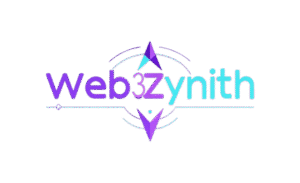Imagine this scenario: it’s a quiet Sunday afternoon in Dakar, and you’re messaging your cousin in Paris about that upcoming family wedding. Rather than promising to send money later, you simply tap a button in WhatsApp, snap over some stablecoins, and—poof—your cousin withdraws it into their SEPA bank account in under a minute. No steep fees, no shady P2P middlemen, no waiting on Western Union. Sounds futuristic, right? Yet it might become reality very soon.
According to multiple whispers (and growing chatter) on X and crypto forums, Flash Technologies—the Dubai-based blockchain firm—will integrate a new Flash Transfer feature into WhatsApp by end of 2025. In short: crypto transfers at chat speed. With WhatsApp boasting 2.7 billion+ users, many in underbanked regions like Africa and Latin America, this could be more than a feature—it might be a seismic shift in how money moves across borders.
Below, we unpack:
- What Flash Transfer is
- How it works inside WhatsApp
- Which networks and players it will plug into
- Why it matters for remittances and global finance
- Risks, regulation, and what to watch for
- How it could change your daily life
Let’s get into it.
From Chat Stickers to Crypto Wallets: WhatsApp’s Money Evolution
Once upon a time, WhatsApp was just a way to avoid SMS fees. Fast forward to 2025, and Meta has turned it into an all-round communication powerhouse—voice, video, status, group chats, payments. Yet in payments, its journey has been bumpy.
Back in 2019, Meta unveiled the Libra vision, which then became the Diem project. Later, in 2021, Meta launched the Novi wallet pilot. That allowed users to send Pax Dollars across borders (yes, amid cat-video exchanges). But due to regulatory pressures and global skepticism, it never scaled widely.
Now, Flash Transfer appears to be the glow-up that nobody predicted.
- Flash Technologies launched in 2022 in Dubai, creating a platform that lets users convert fiat ↔ crypto at partner outlets. (Flash Transfer)
- By early 2025, Flash added support for stablecoins (USDT, USDC, DAI) and even introduced a “Dead Wallet” feature that acts like an on-chain inheritance mechanism. (Apple)
- The next step: integrating into WhatsApp in December 2025, enabling users to set up an account in ~30 seconds (via QR scan or linking existing wallets) and begin sending crypto mid-chat.
Meta’s been relatively quiet about new crypto bets following the Diem/Novi era. Yet with stablecoins now commanding a ~$200 billion+ market cap, regulators are softening in many jurisdictions. WhatsApp already supports payments in countries like India (via UPI) and Brazil. Layering in Flash? It’s like handing grandma a Ferrari—she may not appreciate the speed, but it changes the game.
Flash Transfer Unpacked: 30 Seconds to Financial Freedom
At its core, Flash Transfer is a hybrid model: it blends Web2 ease with Web3 rails.
Here’s how a typical transfer might flow:
- In a WhatsApp chat, tap “Pay” → choose crypto mode → select recipient or link wallet.
- If new, your account activates in ~30 seconds using Google, Apple, or WhatsApp login.
- Select stablecoin (e.g. USDT), send to recipient’s wallet or mobile money account.
- Recipients can instantly cash out to mobile money or bank via integrated fiat rails.
- Smart contract escrow handles disputes, enabling automatic refunds if something goes wrong.
The speed is impressive—transactions settle in seconds, thanks to blockchain infrastructure—but without exorbitant gas fees. Early rumors point to fees around 1–2 %, rather than the 6–10 % charged by legacy remittance services.
It’s also non-custodial: you hold your private keys. So, no FTX-style custodial risk. Early users are already calling it “Venmo for the unbanked.” And the flexibility? Flash is said to support multiple blockchains and fiat rails under the hood—no messy bridges needed.
The Power Players: Orange Money, Wave, MTN, SEPA & More
Flash Transfer won’t operate in isolation. Its real power lies in hooking into existing financial networks deeply embedded across Africa, Europe, and beyond.
Orange Money is one key player. With over 60 million users across 18 African countries, its wallet already powers airtime purchases, utility payments, merchant transactions, and P2P transfers. Flash’s APIs could let users instantly convert crypto into Orange balance.
Then there’s Wave, a rising fintech in Senegal, Ivory Coast, Burkina Faso, and others. With ultra-low fees (1 %) and an appeal to users who avoid traditional banks, wave users could receive crypto remittances seamlessly—no exchange needed.
MTN Mobile Money (MoMo) is another anchor. With ~70 million accounts across 17 African markets, and interoperability via Mowali (Orange–MTN’s JV spanning 22 countries), Flash can plug into that infrastructure to enable cross-border zaps (crypto → MoMo credit).
On the European side, SEPA (Single Euro Payments Area) gives Flash access to 36 EU/EEA countries. That means diaspora workers in Europe (e.g. France, Germany) could send stablecoins that convert into Euros and land in a bank via SEPA rails.
Combine all these rails, and what emerges is a global money conveyor belt: crypto in WhatsApp → mobile money in Africa → Euro bank accounts. As one X post put it: “This is the unbanked’s Venmo.”
Slaying the Remittance Dragon: Fixing a Broken System
Let’s talk numbers. Global remittances amount to ~$860 billion annually. The Africa–Europe corridors alone account for ~$60 billion. Yet average fees: 6.2 %, climbing to 10 % for cash pickup transactions. That eats into household budgets everywhere.
On top of that, peer-to-peer (P2P) crypto remittances are rampant (estimated $5 billion monthly in Africa), but fraught with scams and counterparty risk.
Flash Transfer proposes to cut this mess down:
- Escrow smart contracts auto-refund failed or disputed transactions, reducing scam losses.
- Instant settlement gets rid of 3-day holds.
- High accessibility: 80%+ of African households have a smartphone—and almost all use WhatsApp already.
- Stablecoins like USDT let users avoid local currency volatility—especially useful in high-inflation economies.
In earlier non-WhatsApp pilots (e.g. Izichange integrations with MTN/Orange), users reportedly bought crypto with mobile money in minutes—no bank needed. Scale that across WhatsApp’s footprint, and it becomes a remittance disruptor. In fact, some observers likened stablecoins to the “WhatsApp moment” for money because they can deliver real value at chat speed.
Hurdles Ahead: Regulation, Risk & Market Realities
Of course, no techno-utopia is without friction.
Regulatory patchworks loom large. In Africa, while Nigeria has recently eased stablecoin regulations, many countries still lack clear frameworks. In Europe, the upcoming MiCA (Markets in Crypto-Assets) regulations will provide frameworks—but local KYC best practices might slow rollouts.
Security risk is also real. Smart contracts are powerful but not undefeated. Flash’s non-custodial model mitigates custodial hacks, but users must still protect seed phrases. That “Dead Wallet” inheritance feature is intriguing—but it must be bulletproof.
Adoption barriers—teaching grandma to “tap to send USDT”—won’t be instantaneous. But WhatsApp has viral reach and in-app prompts/training could help.
Rumors also swirl about a native $FLASH token for staking rewards to early users. Time will tell whether that comes into play.
Given all that, I expect a beta rollout in select markets (West Africa + Euro corridors) by end of 2025, with gradual global scale by mid-2026.
Everyday Wins: What This Means for You (and Me)
- If you live in the diaspora (London, Paris, Berlin), Flash could let you send $100 and have $98 land—no middleman fallout.
- If your family is in Abidjan, you might receive crypto remittances that instantly convert to Wave or Orange balance to spend at markets.
- In Berlin or Paris, SEPA + stablecoin combos could let you hedge Euro dips seamlessly.
- As a freelancer paid in crypto, I might just send gig payments mid-chat—no waiting for invoices or cross-border delays.
In short: money becomes as fluid as words.
Final Thoughts: The Dawn of Frictionless Finance
Flash Transfer isn’t just a WhatsApp add-on—it could spark the next wave of borderless finance. With 2.7 billion users as its staging ground, even capturing 0.1% of the $860 billion remittance pie is tens of millions in flow overnight.
Stablecoins get their killer app. Mobile money evolves. The unbanked get a seat at the global table. Crypto adoption jumps from speculative to utility.
X threads are already buzzing: “This is DeFi’s mass adoption moment.” I’m bullish. Flash isn’t just upgrading chat—it’s upgrading money itself. By 2026, sending crypto might feel as old-school as mailing letters.
What’s going to be your first Flash transfer? Drop it in the comments—let’s dream big.
Sources & Further Reading
- Flash Transfer official site — “Send, buy, or sell crypto globally” (Flash Transfer)
- Flash Wallet “Dead Wallet” and app features (iOS listing) (Apple)
- DappBay profile of Flash Transfer (risks) (DappBay)
- News on WhatsApp + crypto remittance efforts (Felix partnership) (The Block)
- Malwarebytes on WhatsApp-crypto scams (Malwarebytes)
- Washington DFI alert about crypto WhatsApp scams (WA Dept of Financial Institutions)



























